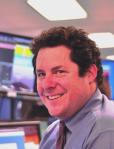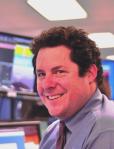 Extract of white paper published by Chris Hempstead, Head of ETF Trade Execution for WallachBeth Capital LLC
Extract of white paper published by Chris Hempstead, Head of ETF Trade Execution for WallachBeth Capital LLC
With respect to analyzing and selecting ETFs, one of the most common and frustrating mistakes that I overhear is “..unless the fund has at least some minimum AUM ($50mm in many cases), or has average daily trading volume less than [some other arbitrary number] (say 250k shares) it should be avoided…”
Some other arguments against ETFs go so far as to suggest that “..ETFs need to have a certain history or track record before they should be considered…” Adding insult to injury is the claim that “investors are at risk of losing all their money if an ETF shuts down.”
In light of recent articles being picked up by media from New York to Seattle, I would like to dismiss a few of these common, yet unwarranted reasons to avoid an ETF based solely on AUM, ADV or track record.
First, let’s address AUM:
“ETFs with less than $50mm should be avoided”
In order for an ETF to come to market (list on an exchange) the fund needs to have shares created. This process is often referred to as “seeding”. The ‘seeder’ is the initial investor who delivers into the custodial bank the assets required to back the initial tradable shares of the ETF in the secondary market. ETFs issue shares in what are known as creation units. The vast majority of ETFs have creation unit sizes of 25k, 50k or 100k shares.
When a ‘new’ fund comes to market, they are usually seeded with at least 2 units of the fund. There are very few examples of ETFs that come to market with more than $5mm in AUM or an excess of 200k shares outstanding. One recent exception comes to mind: Pimco’s BOND launched with ~$100mm AUM and 1mm shares outstanding.
Understanding that ETFs have to start somewhere, it would be difficult to explain how more than 55% of ETFs (excluding ETNs, Leveraged ETFs and Inverse ETFs) have garnered AUM in excess of $50mm.
In other words, someone had to take a close look and invest into the funds. The ‘I will if you will’ mentality is probably not how the most successful fund managers find ways to outperform.
Ten of the top thirty performing ETFs year to date have AUM below $50mm.
(EGPT, TAO, HGEM, IFAS, SOYB, PKB, RTL, QQQV, ROOF and RWW)
Congratulations to the pioneers who ‘went it alone’, as they say. Continue reading




